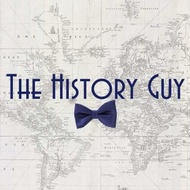
The History Guy Guild
History deserves to be remembered.
Join The History Guy from YouTube in conversation about his videos and various topics in history. Here you can find behind-the-scenes peeks of the set and The History Cats. Share ideas for future videos or ask questions of both the community and The History Guy himself. Early releases and the occasional extras are available for supporting members.
Join The History Guy from YouTube in conversation about his videos and various topics in history. Here you can find behind-the-scenes peeks of the set and The History Cats. Share ideas for future videos or ask questions of both the community and The History Guy himself. Early releases and the occasional extras are available for supporting members.
Interested? Want to learn more about the community?
Art and Science: Samuel F.B. Morse
You’ve likely heard of Samuel F.B Morse, generally credited with the invention of the telegraph. But you might be less aware that the man who famously used his code to say “what hath God wrought?” was also an artist, in fact one of America’s best and most prolific portrait artists, one of our most gifted historical artists, and a leading figure in the development of an American school of art.
00:18:41
Interested? Want to learn more about the community?
What else you may like…
Videos
Posts












